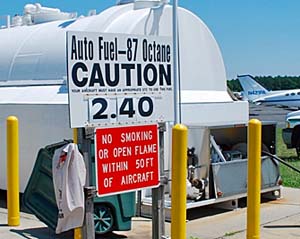
Have you missed the great debate raging over the impending demise of 100LL? Many leading groups — including AOPA and apparently EAA plus others such as the Green 100 Octane Coalition — have endorsed a one-size-fits-all solution. *** But, hey! One size does not fit all. Light-Sport owners are aware their aircraft can operate just fine on 91 octane (premium) ethanol-free gasoline. The same can be said for 70%-80% of all piston-engine aircraft in the U.S. Indeed, more than 60,000 Autogas STCs have been granted from EAA and Petersen Aviation but such added approvals aren’t needed by LSA powered by Rotax or Jabiru. *** Leading aviation alphabet groups show little support for the installation of ethanol-free Mogas pumps at GA airfields. One wonders why? Several benefits follow increased use of E-zero (E0) Mogas: * It’s ideal for the vast majority of American aircraft including virtually all new LSA designs; * It would lead to an immediate reduction in the use of leaded fuels and its impact on the environment; and, * Switching from 100LL to Mogas would dramatically reduce the cost of flying for sport aviators and to flight schools adding LSA to their fleets.




